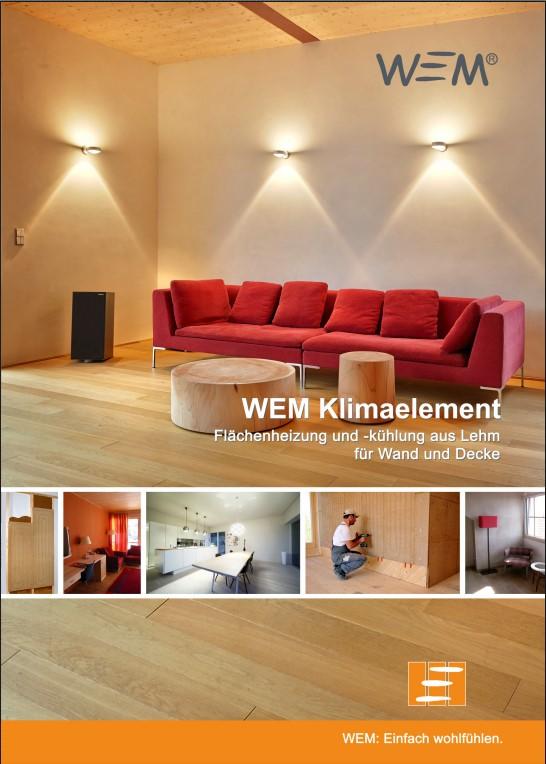Practical and quick
There are two fundamentally different systems for installing water-bearing wall heating systems, which differ in their construction and handling and which are optimized for the respective area of application. Both systems can, however, be combined with one another and thus enable effective work on large areas and in nooks and crannies.
The modern and convenient variant of the wall heating installation can be easily implemented using prefabricated construction elements according to the dry construction method. The heating pipes are already permanently installed in the wall elements made of clay, so that these heating elements are screwed to the subsurface like normal clay building boards. The integrated pipe is connected either to the flow and return or to the next heating element. The spaces between the heating elements are provided with normal, heaterless clay building boards. The resulting surface then only needs a fine plaster. With this type of construction, the drying time is extremely short due to the very low moisture ingress and the construction progress can be significantly accelerated.
The prefabricated heating elements are more expensive to purchase, but significantly cheaper in terms of labor, as they can be installed much faster than plastering a wall heater. The prerequisite for this, however, is a flat, straight subsurface. Another great advantage is the efficient, quick installation over large areas. This system is therefore only conditionally practicable for use in old buildings with small areas, crooked walls and angled corners. Flexible wet installation is suitable for this.

How much heating do I need?
Get a non-binding heat requirement calculation now

Water-bearing or electric
The wall heating elements are available in three different sizes and two different versions: the water-bearing model, which is connected to the central heating, and the electrically heated model. Resistance cables run in the electrical heating modules, similar to those in an incandescent lamp, which generate heat and release it into the room. This heating system is particularly suitable for short-term rooms such as seminar rooms or holiday homes. For long-term use, however, the use of a water-bearing system is recommended.
The heating modules are integrated into the existing or newly constructed heating circuits and connected to the heating circuit distributors. Each distributor leads on the one hand with the flow and return to the heating system, on the other hand it is the connection for the individual heating circuits. At around 35 ° C, wall heating requires a relatively low flow temperature. The individual heating circuits are controlled by servomotors that are connected to the heating circuit distributor and that are electrically controlled by the room thermostats.
